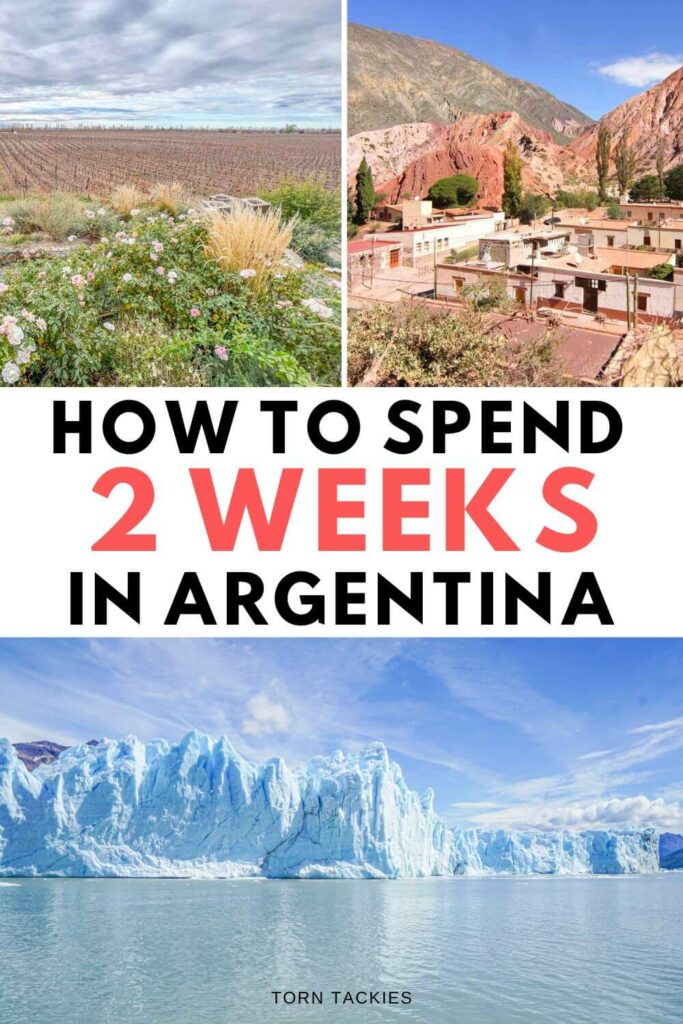Are you planning your itinerary for Argentina? Looking for the best travel route? You’ve come to the right place!
I’ve visited Argentina 3 times, and on every trip, I discover something new to love about the country.
Whether it’s the landscapes of Patagonia, the malbecs of Mendoza, or the parrillas (steakhouses) of Buenos Aires, Argentina is pretty epic!
If you follow my 2 week Argentina itinerary, you’ll get a taste of what makes the country so unique. And if you have any questions at the end, drop me a message in the comments section, and I’ll be happy to help!

Torn Tackies contains affiliate links. If you make a purchase using one of these links, I may receive compensation at no extra cost to you. See my disclosure for more information.
Quick Navigation
Overview of my Argentina itinerary
- Day 1-2: Buenos Aires
- Day 3-4: El Calafate
- Day 5-7: El Chalten
- Day 8-10: Mendoza
- Day 11-13: Iguazu
- Day 14: Buenos Aires
Tips for 2 weeks in Argentina
Argentina is a massive country! With only 2 weeks, there’s not enough time to do and see everything. This guide covers the highlights and is a good balance of adventure, culture, cuisine, and nature.
You can customize this Argentina itinerary depending on your budget and the way you prefer to travel.
Here are a few tips before we get started.
- Every Argentina bucket list should include the towns of El Chalten and El Calafate in Argentina Patagonia.
- The distances in Argentina are far! If you only have 2 weeks, air travel is the way to go. You will still have long flights, but unfortunately, there’s no way of avoiding this.
- If you’re not visiting the Brazillian side of Iguazu Falls, reduce your time there to 2 nights and add an extra night in Buenos Aires at the start of your trip. This will give you more time to recover after a long international flight.
- It’s a busy itinerary. You’ll visit all the main attractions and cover a lot of ground. If you prefer to travel slower and minimize flying time, skip Iguazu, the last destination on this route. Instead, add an extra day in Patagonia and Mendoza. This is what I’d do with only 2 weeks in Argentina.
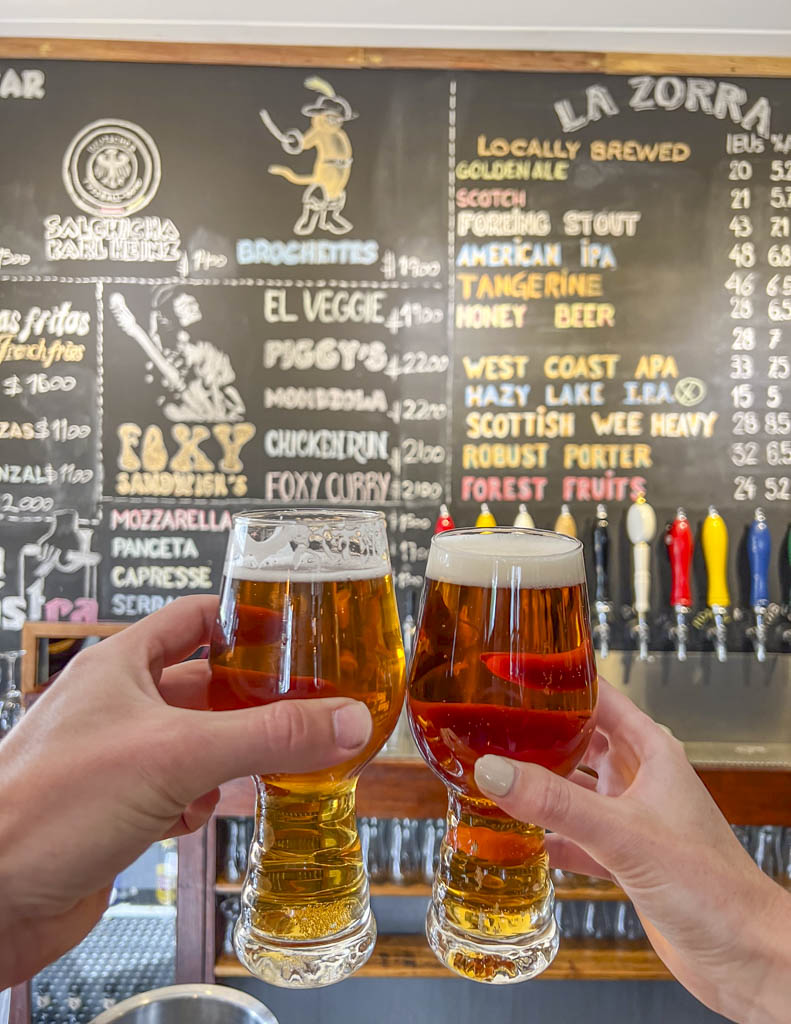
Day 1-2: Buenos Aires
The bustling city of Buenos Aires is the capital of Argentina. Your international flight will most likely arrive here, marking the start of your Argentina itinerary.
Known for its Parrillas (Steakhouses), tango shows, and impressive architecture, Buenos Aires is a fun city to explore.
You only need 2 nights here, giving you more time to explore other places in the country. If you have more than 2 weeks in Argentina, you can stay for 3 nights instead.
How to get to Buenos Aires
Buenos Aires has two aiports. If you’re arriving on an international flight, you’re most likely arriving at Ezeiuza Airport (EZE). This is a 45-minute drive into the city.
The domestic airport is called Aeroparque (AEP). It’s closer to the city and more convenient if you’re traveling within Argentina.
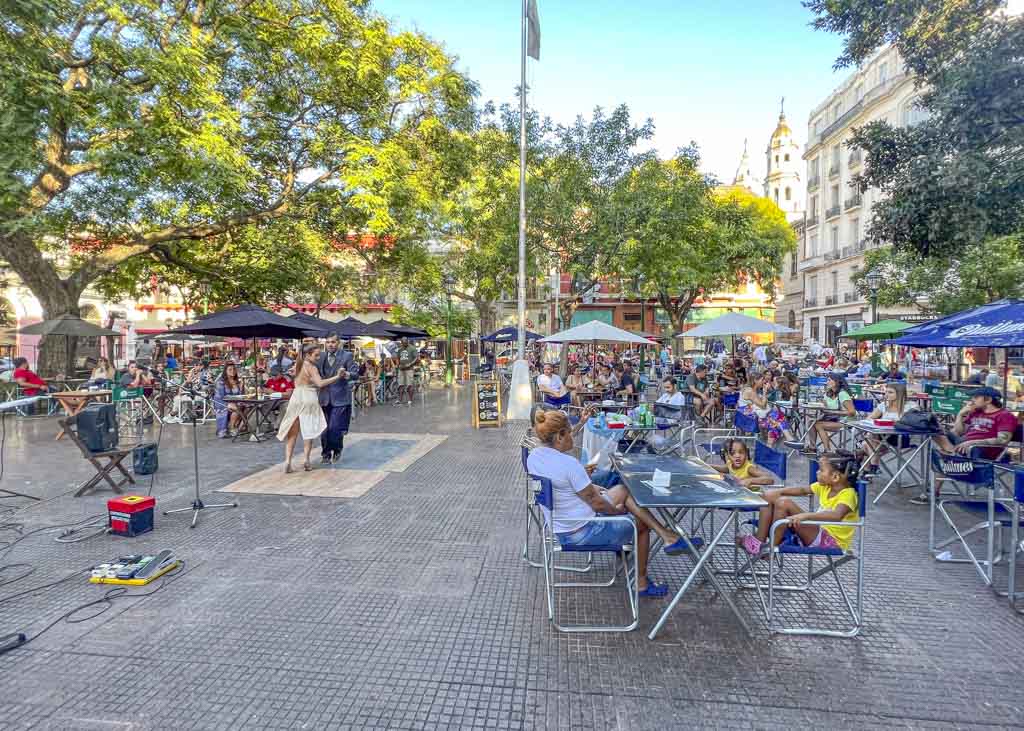
What to do in Buenos Aires
If you arrive mid-morning, head to your accommodation, drop off your bags and get ready to explore Buenos Aires.
Go to a Tango show: You can join a tango show like this one. Or, if you prefer a more relaxed vibe, you can visit one of the many plazas in Buenos Aires instead. From 3 pm, these town squares are bustling with performers dancing and playing music. I went to Plaza Dorrego in San Telmo and enjoyed being outside, drinking a beer under the trees while watching the dancers do their thing.
Do a free walking tour: I did this free walking tour through Recoleta and it’s an excellent option for budget travelers. But there were so many people in the group, and we constantly had to wait for everyone to come together. If you’re looking for a more personal and interactive tour, pay for a smaller group tour. You’ll learn a lot more from a tour like this.
Visit the La Baco neighborhood. Caminito Street is a famous pedestrian street and alleyway in La Boca. It’s known for its brightly painted buildings and street art. It’s become a huge tourist attraction, so expect crowds.
Go to San Telmo Market. San Telmo Market (or Mercado) is a vibrant market in a huge warehouse-type building. There are many restaurants, bars and lots of music. Sundays are the most popular and can get overly busy – I suggest avoiding it on the weekend. I went on a Friday, and it was awesome!
Eat Dulce de Leche. Dulce de leche is a sweet caramel-like sauce or spread popular in Argentinian cuisine. It’s used in various desserts and sweet treats, such as cakes, cookies, ice cream, pastries, and more.
Go for a steak at a Parrilla. Argentina is famous for its world-renowned steaks. I can confirm that they are incredible. The best I’ve had. You’ll need to have a booking as the good ones have limited availability. I went to Grandes Carnicerias del Plata in San Telmo and highly recommend it.

Where to stay in Buenos Aires
I stayed in San Telmo and enjoyed this neighborhood. It’s laid back and authentic, with many locals calling it home. Anselmo Hotel Buenos Aires is a great hotel that is close to many attractions.
Another popular area to stay in is Palermo. It’s the tourist hub and in the heart of the city. These modern and new apartments are a great option that offers fantastic city views. There’s also a rooftop pool!
Day 3-4: El Calafate
Today, you’ll leave the hustle and bustle of the capital and head down to the southern tip of Argentina: Patagonia.
It’s a bucket list destination for most travelers, so you can’t skip it! Our first stop will be the town of El Calafate, home to the famous Perito Moreno Glacier.
I don’t suggest more than 2 nights in El Calafate. The glacier is the main attraction in El Calafate, and you’ll need a full day to visit it.
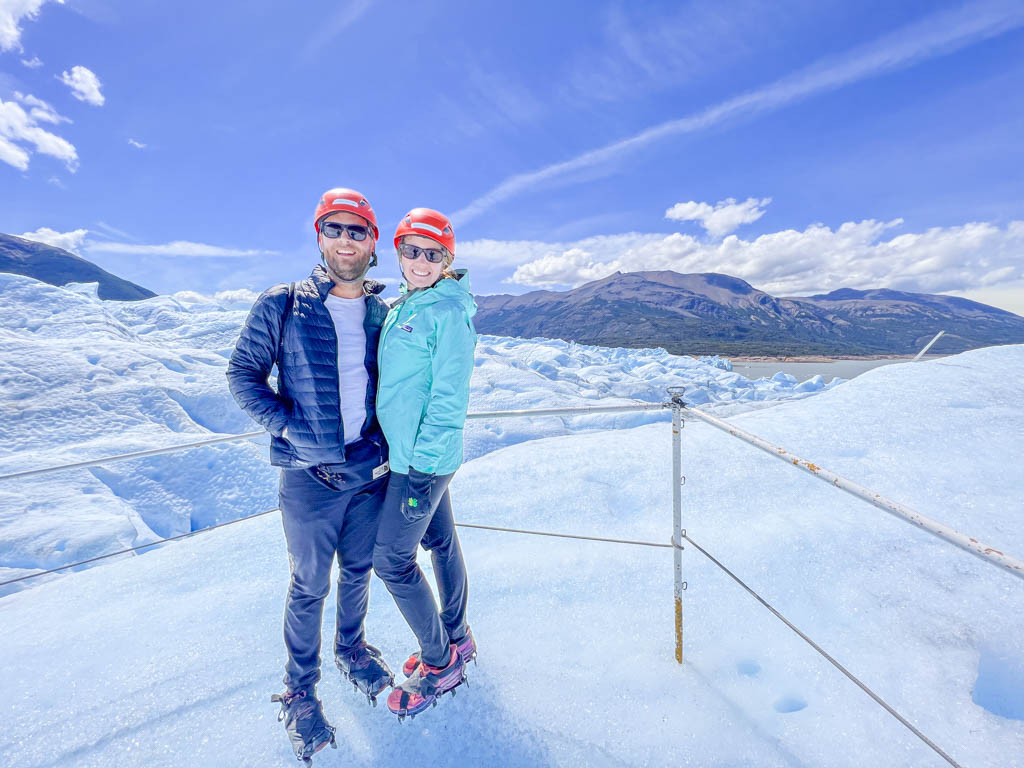
How to get to El Calafate
It’s a 3.5-hour flight from Buenos Aires to El Calafate in Argentina Patagonia. Aerolineas Argentinas, JetSmart, and FlyBondi all service daily flights to the region.
Try to book a morning flight so that you have the afternoon to walk the streets of El Calafate.
Things to do in El Calafate
After landing in El Calafate and checking into your hotel, it’s time to explore the town.
Here are a few things to do if you have the afternoon free. Remember that your second day in El Calafate will be at the glacier, so you won’t have much time (or energy) to do anything after that.
Have lunch at La Zorra Taproom. The beers are magnificent, and their food is equally impressive.
Check out the El Calafate sign. On the hill alongside Plaza de los Pioneros, a wooden walkway leads to the El Calafate sign.
Go for dessert at Viva la Pepa. These were the best crepes I’ve ever had.
Indulge in cheese and wine at The Wine Shop. We did a great tasting here and learned a lot about Argentina wine.
Parilla at La Lechuzita. This steakhouse is highly underrated.
Now that your first day in El Calafate is over, it’s time to prepare for the second.

Visit Perito Moreno Glacier
El Calafate is the gateway to the Perito Moreno Glacier. It’s located in Los Glaciares National Park, a 90-minute drive from town.
This glacier is the main attraction in El Calafate. And yes, it’s as impressive in real life as in the photos.
How to explore Perito Moreno Glacier
Planning your trip to the glacier is more challenging than it seems. There are no public buses to and from the park, so you’ll need to rent a car or pre-book a bus or tour; the latter is the most popular option.
What you can do in the park is limited to the below activities.
- Perito Moreno walkways: If you’re on a budget, you can book a bus to Los Glaciares National Park and visit the walkways only. These comprise of 4 km of interconnected paths that offer panoramic views of the glacier.
- Glacier trekking tour: I did this Mini trekking tour, which was well worth the money. Not only do you get to walk on the actual glacier, but it also includes a short boat trip. You’ll have some time to explore the walkways as well.
- Boat around the glacier: The Mini trekking tour sells out fast, so a good backup option is this boat cruise, which allows you to get closer to the glacier.
Regardless of what tour you do, visiting Perito Moreno Glacier will be expensive! But it’s worth every cent.
Book your spot here, as there is limited availability.
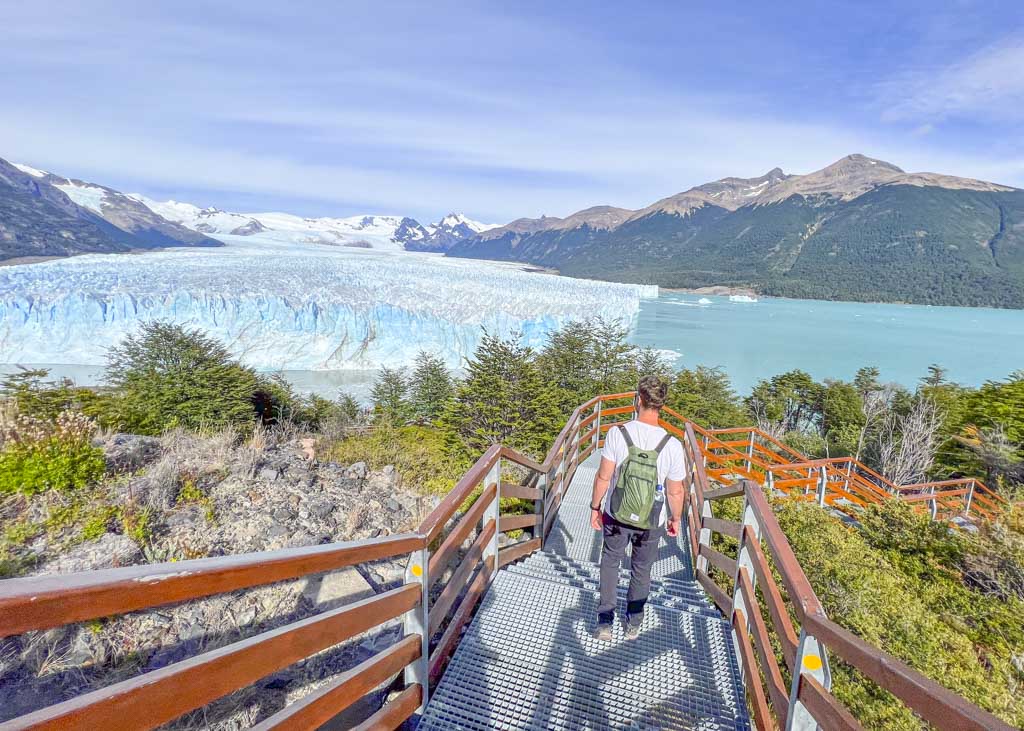
Where to stay in El Calafate
I stayed at Folk Hostel, and it’s a great choice for backpackers. It’s close to the bus terminal, but you’ll have to walk further to the main town center. If you would prefer to be closer to town, you can’t go wrong with
Mirador del Lago Hotel has large, gorgeous rooms with beautiful views. The breakfasts are exceptional and perfect for those looking for a more comfortable and luxurious stay.
Day 5-7: El Chalten
El Chalten is the hiking capital of Argentina Patagonia. It’s a charming town, smaller than El Calafate.
It’s also my favorite place in Patagonia, and I suggest spending 3 nights here.
Top tip: Not into hiking? I suggest visiting Bariloche instead of El Chalten if you don’t enjoy hiking. It’s also in Argentina Patagonia. I visited both areas and preferred El Chalten, as the hikes are incredible! But the lake district of Bariloche is equally as beautiful and offers more activities that don’t involve intense trekking.

How to get to El Chalten
You’ll need to take a 3.5-hour bus from El Calafate to El Chalten. The journey is incredibly scenic, and the buses are comfortable. I booked my bus through Bus Bud. You can check prices and availability here.
If you’re changing the route of your Argentina itinerary and want to visit El Chalten first, you will still need to go to El Calafate as there is no airport in El Chalten.
Hiking in El Chalten
With only a few days in El Chalten, you’ll have to pick and choose what you get up to. You’ll be able to fit in two of these full-day hikes in El Chalten and a shorter hike on the day you arrive.
Hike Laguna de los Tres
Laguna De Los Tres is the crown jewel of El Chalten. It’s a turquoise blue lake at the base of the famous Fitz Roy mountain and offers picture-perfect views.
It’s a difficult 9-hour return hike to get from El Chalten to Laguna de los Tres. You’ll need to be prepared with food, water, and a lot of energy.
It was the most challenging day hike I did in Patagonia (but so worth it). You don’t need a guide for this hike or others in El Chalten, as the routes are easy to follow and clearly marked.
Read my guide to Laguna de los Tres here.
Top tip: You can also opt for the shorter hike to Laguna Capri. This covers the same trail that leads to Laguna de los Tres but is better suited for children or those looking for a more leisurely hike.

Hike Laguna Torre
Laguna Torre is a huge glacier lake filled with small icebergs. The Cerro Torre Mountain range forms the backdrop and looks like something from a postcard.
The Laguna Torre hike is equally impressive as Laguna de los Tres. The difference? It’s a lot easier! It takes around 6 hours to complete, but most is a flat trail.
Try to start your hike before sunrise to beat the crowds. Alternatively, depending on when you arrive in El Chalten on your first day, you could do this hike then.
Remember, the sun sets after 9 pm in the summer, so you’ll have plenty of time to complete this hike if you leave El Chalten by noon.
Hike Mirador Condores
Mirador de los Condores is one of the best short hikes in El Chalten. You only need 2 hours to complete it.
It’s easily accessible from the town center and starts with a glandular incline to the viewpoint. You’re treated to spectacular views of El Chalten, Fitz Roy, and Cerro Torre from here.
After reaching Mirador de los Condores, you can continue along a flat trail to a second viewpoint, Mirador de las Aguilas.
The views from Las Aguilas are very different from what you would have seen, and it’s a worthwhile addition to your hike.
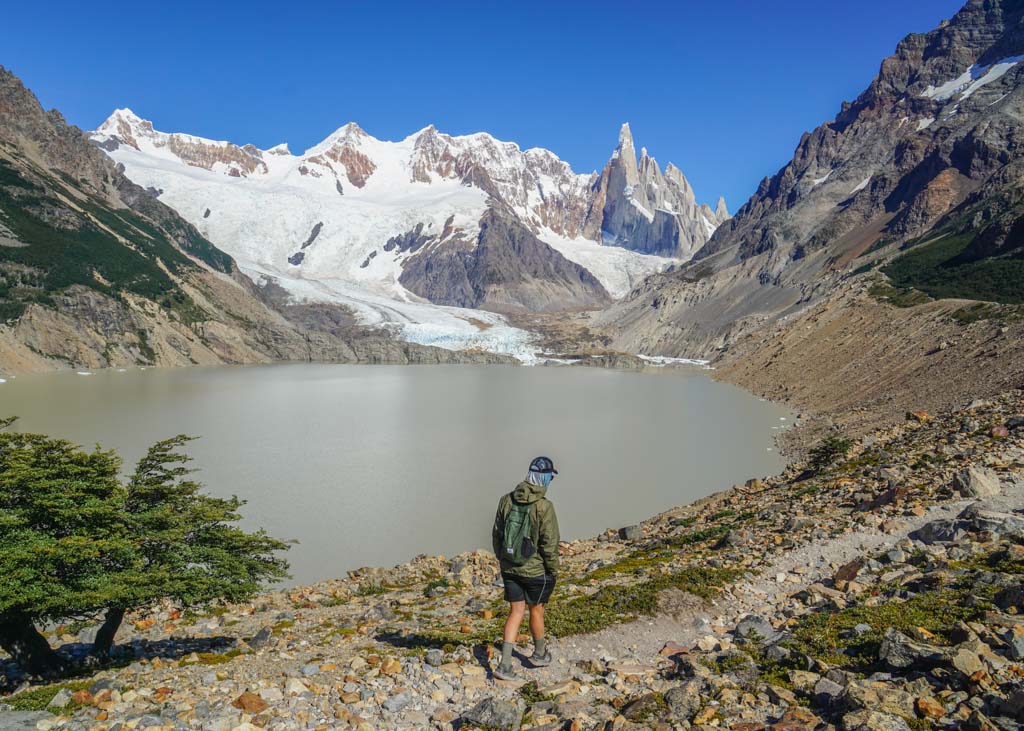
Other things to do in El Chalten
If you need a day off the trails, here are other things to do.
White river rafting: I went river rafting in El Chalten and loved it. The rapids aren’t too intense, but they offer a nice break from all the hiking. Find out more here.
Rent a car and make a day trip to Lago del Desierto: Lago del Desierto is a beautiful lake surrounded by forests with picturesque mountain views.
Visit Glacier Huemul: Glacier Huemul is a beautiful short hike to a glacier behind a turquoise lake. It’s an hour’s drive from town, so you’ll need to rent a car or catch a shuttle to get here.
If you want to explore more of Patagonia, including the Chile side, here’s my guide to the best Patagonia travel route to follow.

Where to stay in El Chalten
Apart Guillaumet is a basic accommodation option that ticks all the boxes, including an affordable price.
If you’re looking for something more luxurious, you can’t go wrong with Chalten Suites Hotel. There’s an onsite restaurant just a stone’s throw away from the trails.
Day 8 – 10: Mendoza
Did you know that Argentina is one of the leading wine producers in the world? Because I didn’t!
Nestled alongside the Andes Mountains, just a stone’s throw away from Chile, lies Mendoza.
This is where you’ll find the best food and wine in the country! You’ll need (and deserve) to treat yourself after a few busy days in Patagonia, so it’s the perfect addition to your Argentina travel route.

How to get to Mendoza
If you’re following my Argentina 2 week itinerary, take the earliest bus from El Chalten to El Calafate airport.
I struggled to find direct flights between El Calafate and Mendoza. Most have a quick layover in Buenos Aires, so this might be your only option.
Things to do in Mendoza
Mendoza is home to these three high-altitude wine regions: Maipu, Lujan de Cuyo, and Valle de Uco. I visited all of them and had the best time.
You’ll have a few nights here, so I suggest spending 2 days exploring the wineries. In high season, you’ll need to book your wine tours and make restaurant reservations at least a week in advance.
Go biking between the wineries
If you plan on visiting the wineries in Lujan de Cuyo or Maipu, renting a bike for the day and cycling between them is best. The wineries are near each other, and it’s a cheap and fun way to explore the region.
I also did this multi-bike wine tour in Maipu and highly recommend it! The highlight was peddling through the quiet streets, sipping delicious Malbecs while feasting on the most incredible cheese platter.

Go on a small wine tour
Plenty of organized tours depart from Mendoza City to all the wine regions.
The best part of booking a group or private tour like this is that all the admin is taken care of. You don’t need to make any bookings for tastings or lunches as it’s all done for you.
This is a fantastic tour that includes wine tastings at three wineries, a gourmet lunch, and return transport.
Most group tours have a maximum of 8 passengers, so you’re still guaranteed to have personal experience.
Bus Vitivinicola: The Best Large Group Tour
If you’re traveling on a budget or looking for the most social way to explore Mendoza, I highly recommend Bus Vitivinicola.
I can vouch for them as I did this tour; it was so much fun! It’s a large group tour that accommodates up to 50 people.
They have daily departures that rotate between all the Mendoza wine regions.

Where to stay in Mendoza
Chacras de Coria is my favorite suburb to stay in Mendoza. It’s a 20-minute drive south of the city but is close to the Lujan de Cuyo wine region. If you’re looking for a quiet getaway, I recommend staying here. Casa de Coria is a charming B&B with spacious and comfortable rooms. Check rates and availability here.
However, you can also stay in Mendoza city and take tours to the wineries. There’s also much more going on in the city, and accommodation options are plentiful, especially if you’re backpacking on a budget.
Here’s my detailed guide on the best places to stay in Mendoza.
Day 11 – 13: Iguazu
Iguazu Falls is one of the largest waterfall systems in the world. It’s classified as a Wonder of Nature and lies on the border between Argentina and Brazil.
As you’ll see, a few variables can affect how much time you should spend in Iguazu during your 2 weeks in Argentina itinerary. These include the arrival time of your flight and whether you have a visa (if necessary) to visit the Brazilian side.
If you’re short on time, then stick to the Argentina side. One full day here is enough, and it’s more impressive than the Brazilian side.
How to get to Iguazu National Park
Iguaza lies north of Argentina, and you’ll need to catch a flight to Iguazu Airport.
There isn’t a direct flight from Mendoza, so you’ll have a connection in Buenos Aires. Another full day of travel!
As you can see, during your 2 weeks in Argentina, you cover a lot of ground. All the long travel and airports can be exhausting, so if you’d prefer to skip one place on this itinerary, I suggest Iguazu Falls. This will give you an extra day in Patagonia and an extra day in Mendoza.
On the other hand, if you’re not into food and wine, then keep Iguazu Falls on your itinerary, but instead, skip Mendoza and spend an extra day or two in Patagonia.

Visit Iguazu Falls: Argentina side
The Argentinian side makes up about 80% of Iguazu Falls.
There are a series of walkways that get close to the waterfall from the Argentinian side. You can also book a tour like this with a boat ride under the falls. It’s a wild ride, and you will get soaking wet – but it will be worth it. Check prices and availability here.
Top tip: If you change up your itinerary for Argentina and arrive in Puerto Iguazu in the morning (or afternoon), you will still have enough time to visit the Argentinian side of the falls on this first day. But if you’re coming from Mendoza, it’s best to see the falls on your second day.
The Brazilian side
The Brazillian side of Iguazu Falls offers the best viewpoints for photos. But you don’t get as close as you would on the Argentina side. Hence, many people choose to skip it if they’re short on time.
Visiting the Brazillian side through an organized tour like this is best as you’ll need to go through passport control. Some nationalities require a visa which has to be arranged before the start of your Argentina trip.
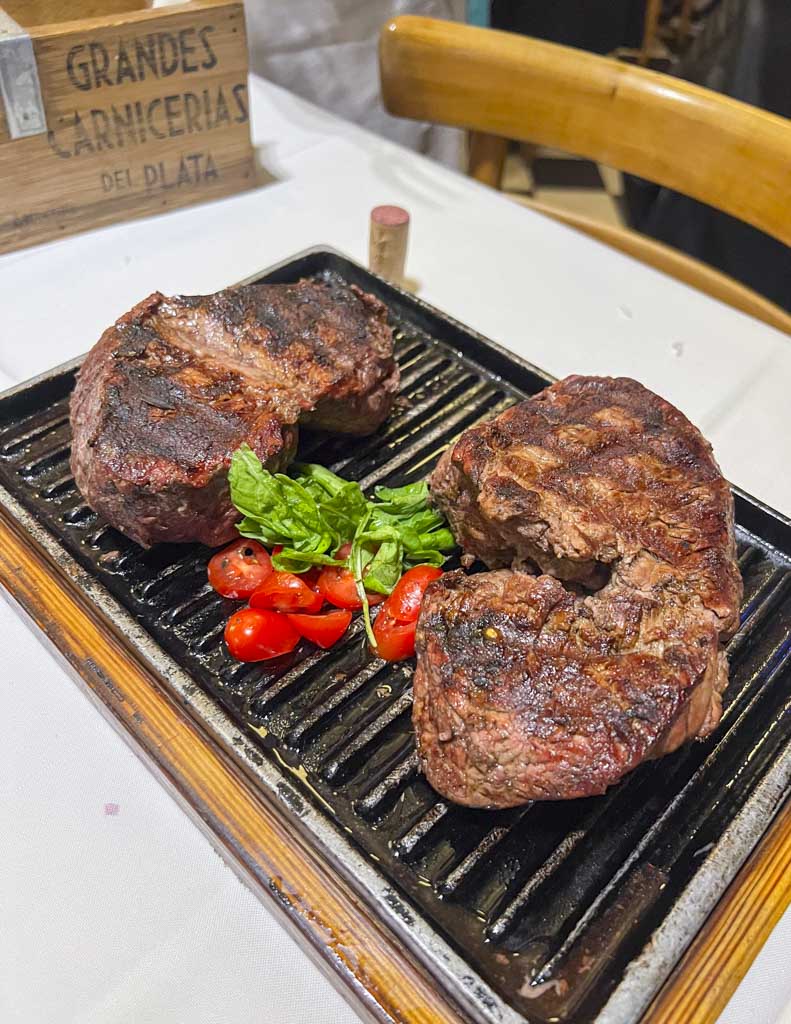
Where to stay in Iguazu Falls
Most accommodation is located in the center of Puerto Iguazu. From here, you can easily get to the Falls by public transport.
If you want to stay inside the National Park, Gran Meliá Iguazú is the perfect option. It’s exquisite! This 5-star property offers a luxurious stay and a stunning location that’s hard to beat.
For something a bit closer to town, you can’t go wrong with O2 Hotel. It’s close to bars, restaurants and public transport. The rooftop pool is an added bonus.
Day 14: Buenos Aires (Departure)
After 2 weeks in Argentina, it’s back to where we started: Buenos Aires
Other places to add to your Argentina itinerary
You might not enjoy hiking (or wine) as much as I do! If that’s the case, here are other places to visit in Argentina.
Bariloche (3 days)
Bariloche is located in Argentinian Patagobia. It’s north of El Chalten, and you’ll need to catch a flight to get here. I spent a few days in Bariloche and enjoyed how different it was from the other regions in Patagonia.
The town boasts stunning lakes and viewpoints and is home to the most delicious chocolates. It’s also the place to visit in winter as you can ski here.
If I had to choose, I prefer Mendoza and El Chalten over Bariloche, and that’s why it’s not on my Argentina 2-week itinerary.
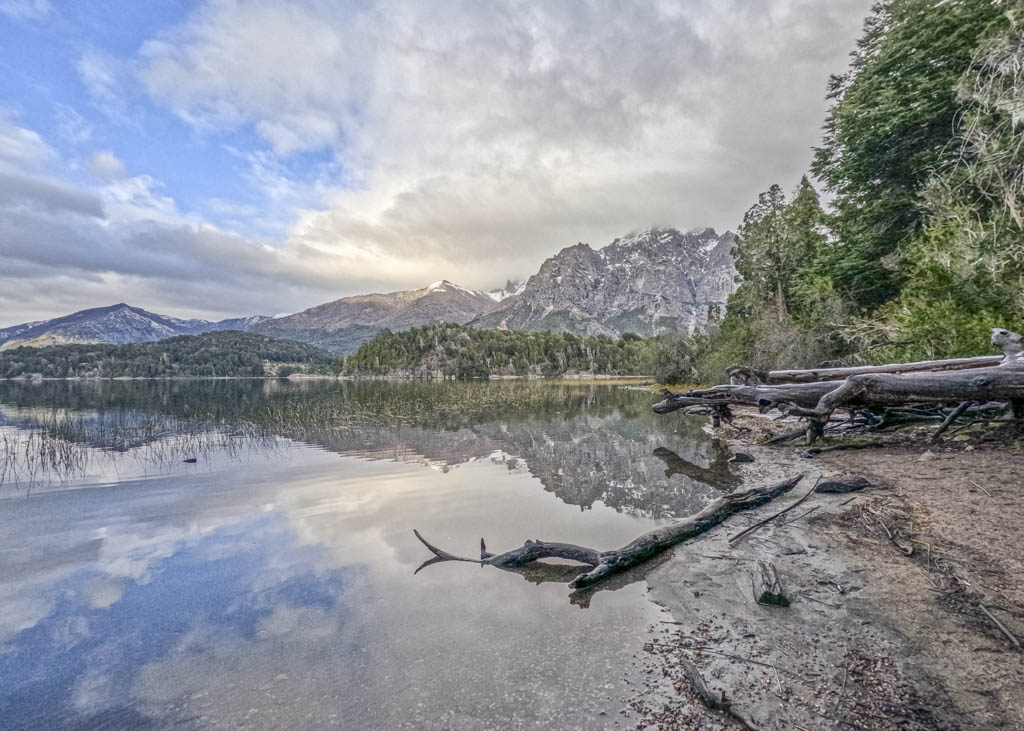
Ushuaia (3 days)
Ushuaia is the southernmost city in Argentina (and the world). It’s the gateway to Antarctica and is a busy port city for Antarctica cruises.
Tierra del Fuego National Park is one of the best places to visit, and the scenery is stunning.
You can fly to Ushaia from El Calafate. But you’d need to skip either El Chalten or Mendoza (which I wouldn’t).
Salta and Jujuy (4 days)
Salta and Jujuy are north of Argentina. You’ll find unique landscapes here that are unlike other destinations on this Argentina itinerary. It’s also hope to a wine region, yet not as impressive as Mendoza.
These provinces are suited for travelers looking for a more cultural experience and historical sites.
But if you only have 2 weeks in Argentina and Salta and Jujuy are on your bucket list, you’ll have to skip one of the other destinations. The attractions in the north are far apart, so you’ll need a car to get around. 3 nights, 4 days is the minimum time you want to spend here.
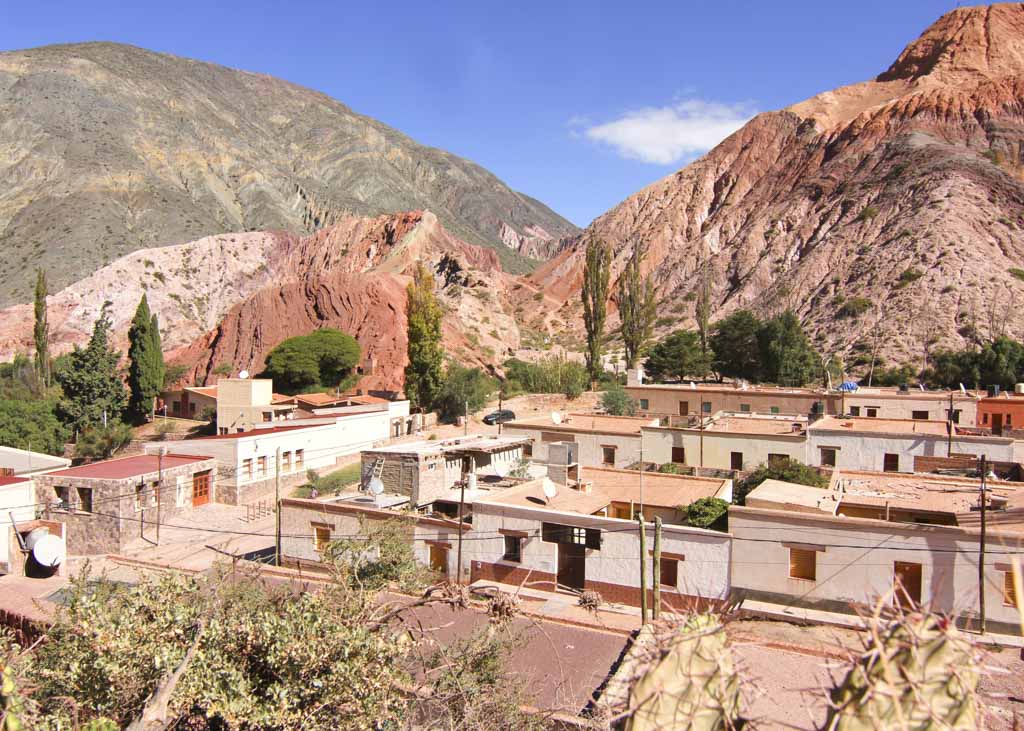
2 Week Argentina itinerary FAQs
How many days do you need to see Argentina?
You need a minimum of 10 days in Argentina. But you still won’t get to everything! Distances are far, and there’s a lot of travel, so 2 or 3 weeks is recommended.
What is the best month to visit Argentina?
March is the best time to visit Argentina to avoid the tourist crowd and enjoy the fantastic weather. However, anytime between October and April is considered a good time as the days are long and sunny with great conditions for hiking.
What is the best way to get around Argentina?
It’s best to fly between destinations as distances are far. However, if you have time, you can take a bus. They’re very comfortable and safe to travel with.
Like it? Pin it!
Do you have any questions about this itinerary for Argentina in 2 weeks? Drop me a question in the comments section below!
Looking for more Argentina travel inspiration? Check out my other posts!

